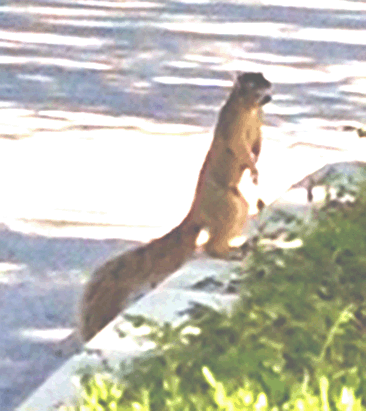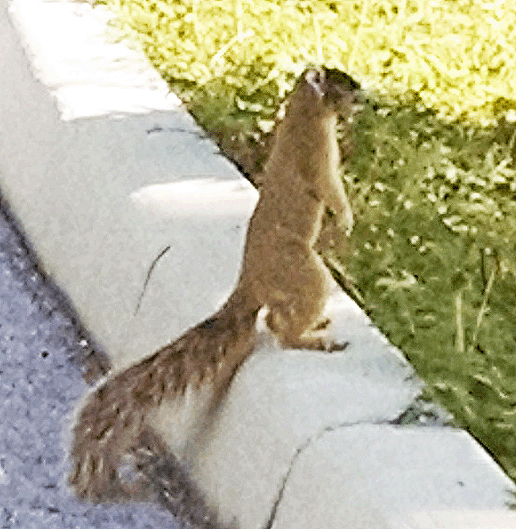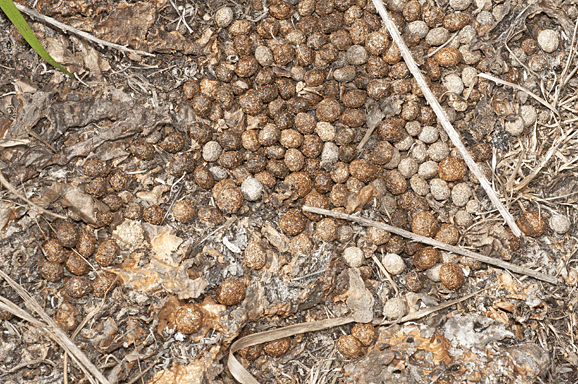 Sylvilagus floridanus is a member of Family Leporidae and it's one of the most common North American rabbit species. At 43 cm long with a tail 3.8 cm long, this species has grayish brown fur with some black hairs. The belly is white, its eye ring is white, and the underside portion of the tail is white. As can be seen in the photographs above, the back of the neck is a rusty color. The ears are 6.4 cm long and the upper edges are striped with black. When the rabbit jumps away, as seen in the second photograph, the fluffy tail is raised, displaying the "cottontail."
Sylvilagus floridanus is a member of Family Leporidae and it's one of the most common North American rabbit species. At 43 cm long with a tail 3.8 cm long, this species has grayish brown fur with some black hairs. The belly is white, its eye ring is white, and the underside portion of the tail is white. As can be seen in the photographs above, the back of the neck is a rusty color. The ears are 6.4 cm long and the upper edges are striped with black. When the rabbit jumps away, as seen in the second photograph, the fluffy tail is raised, displaying the "cottontail."
Cottontails are most often seen at dusk and dawn when they are foraging for food. The photographs below show two images taken with remote cameras. Photographs: Courtesy of Ian Bartoszek, Conservancy of Southwest Florida biologist.
During most of the day, cottontails hide in the cover of Serenoa repens (saw-palmetto). They don't dig burrows. Instead, they scratch out a depression to make a nest lined with grass and fur. After breeding, the female gives birth to four or five blind offspring (kits), each with a very fine coat of hair. In Florida, cottontails can have up to seven litters each year.
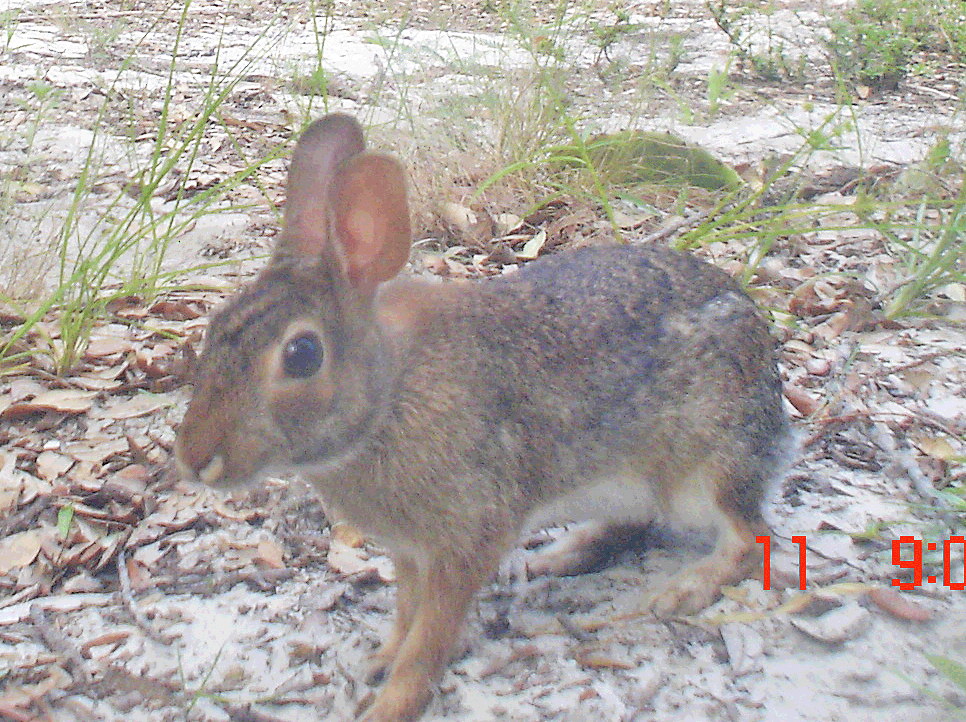
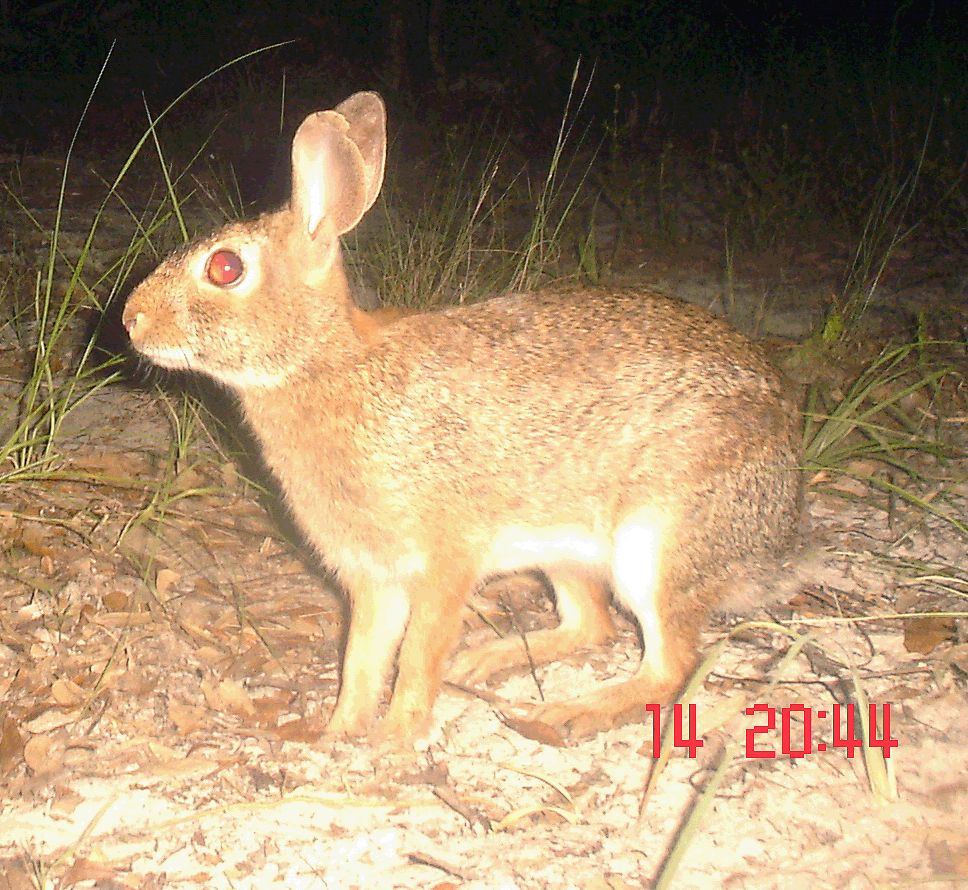 Cottontails consume twigs, leaves, grasses, fruits, flowers, and plant seeds. As shown above, scat consists of piles of dark brown, pea-size pellets. These rabbits produce two types of fecal pellets, one they eat. The re-digestion of these pellets is thought to greatly increase the nutritional value of the food.
Cottontails consume twigs, leaves, grasses, fruits, flowers, and plant seeds. As shown above, scat consists of piles of dark brown, pea-size pellets. These rabbits produce two types of fecal pellets, one they eat. The re-digestion of these pellets is thought to greatly increase the nutritional value of the food.
When chased, cottontails can reach speeds of 29 km/h (18 mph). Their predators include Canis familiaris (domestic dog), Vulpes and Urocyon spp. (foxes) , Canis latrans (coyote), Lynx rufus (bobcat), Felis cattus (domestic cat), Procyon lotor (raccoon), Bubo virginianus (great horned owl), Strix varia (barred owl), Buteo spp. (hawks), and snakes.
As shown below, a rabbit was found dead in the Preserve. There was no apparent cause of death. Ants covered its eyes and appeared to be obtaining moisture. Within a few days, the entire carcass had been removed, probably by a large scavenger.

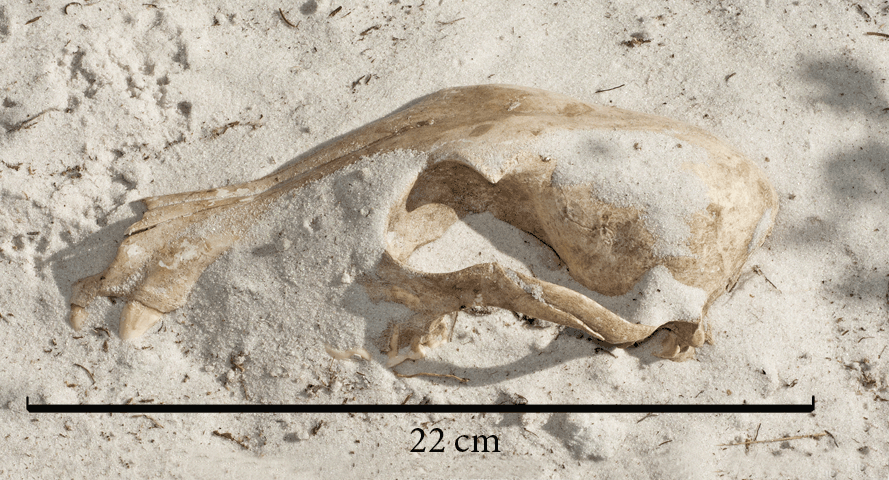
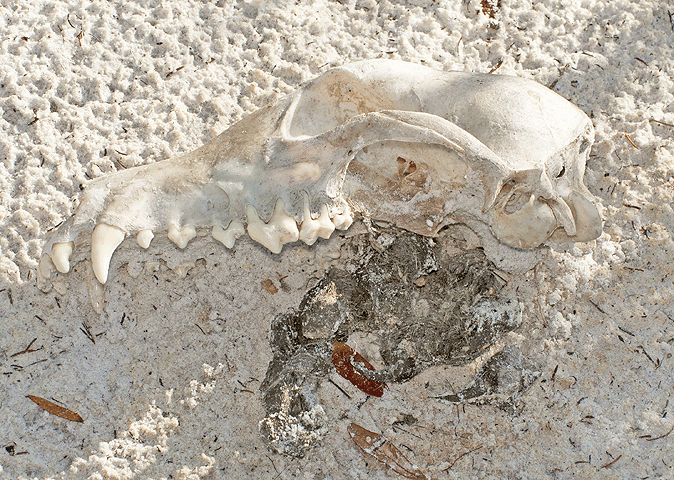
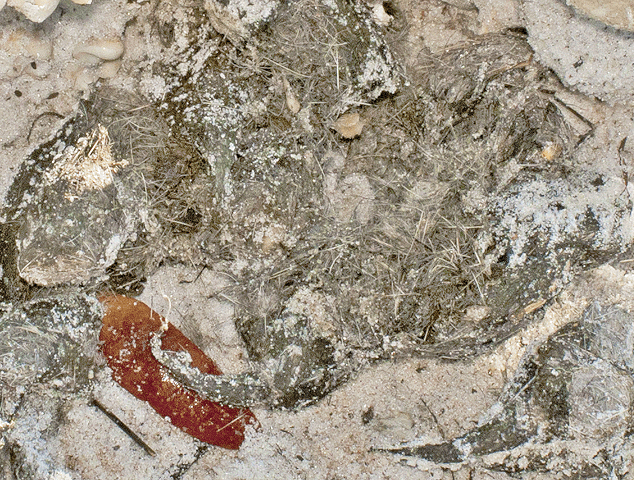
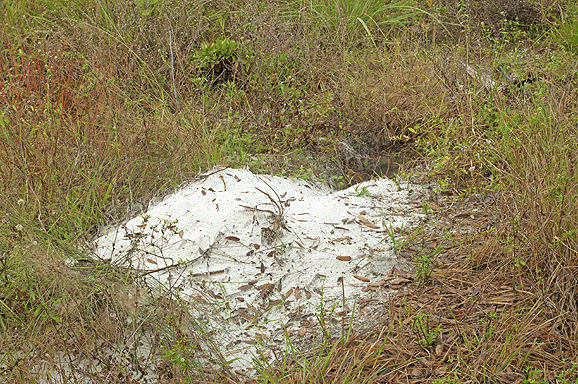
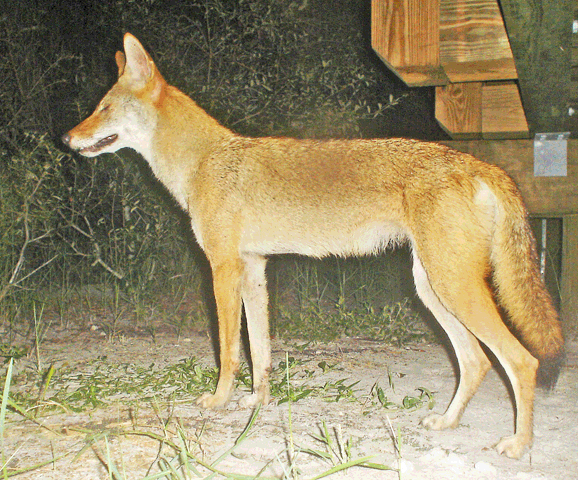
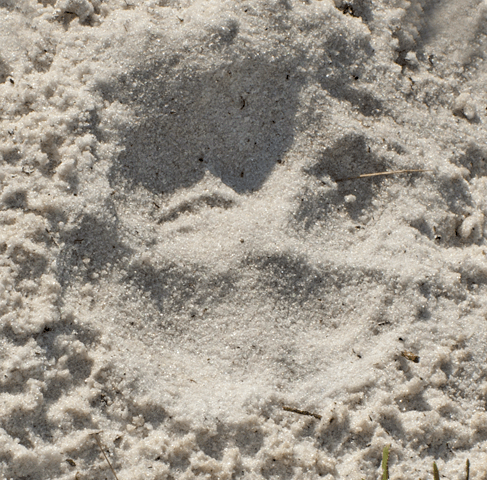
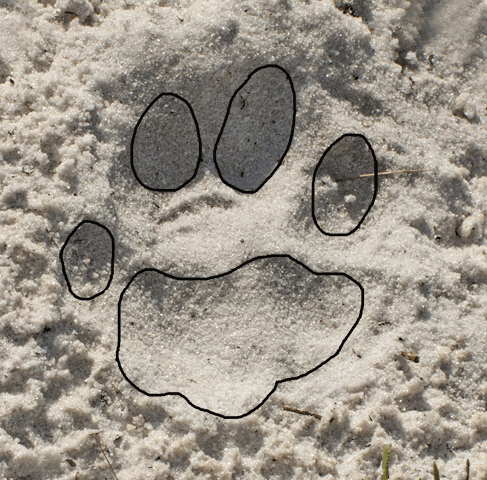
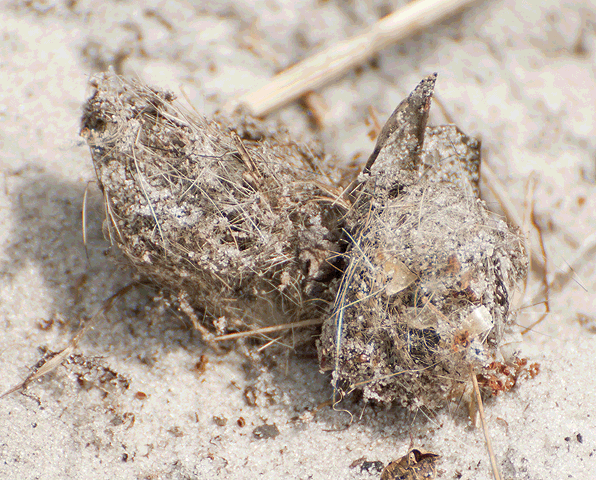
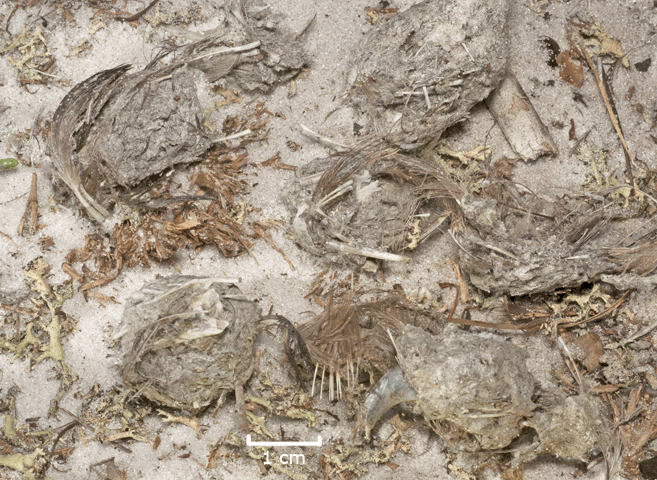
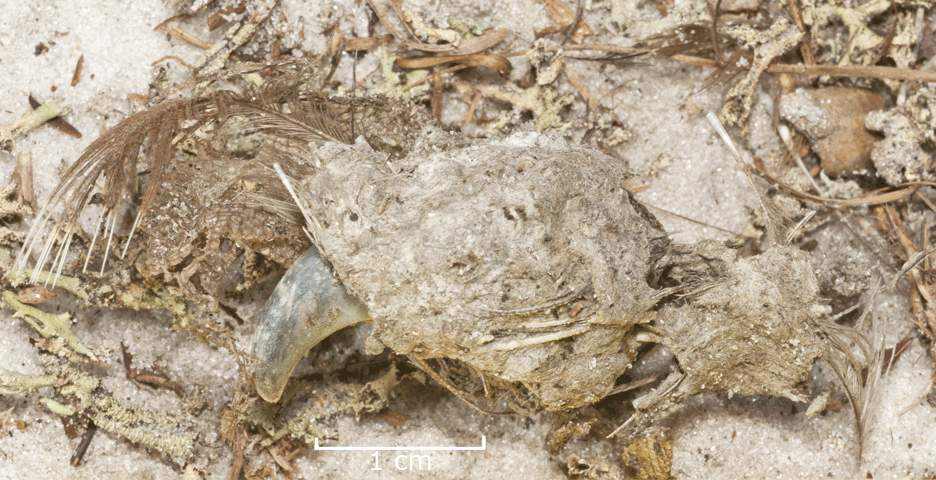
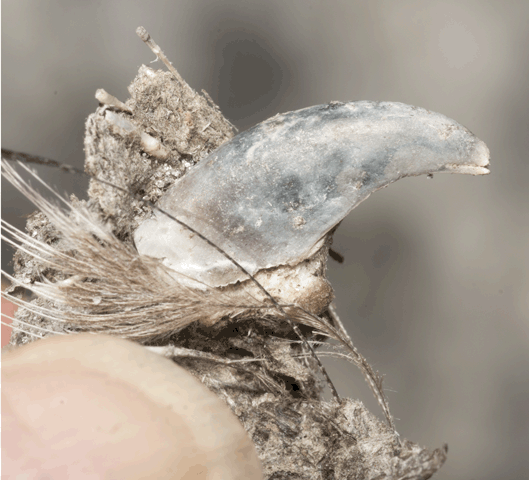
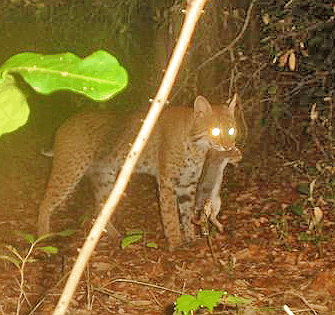
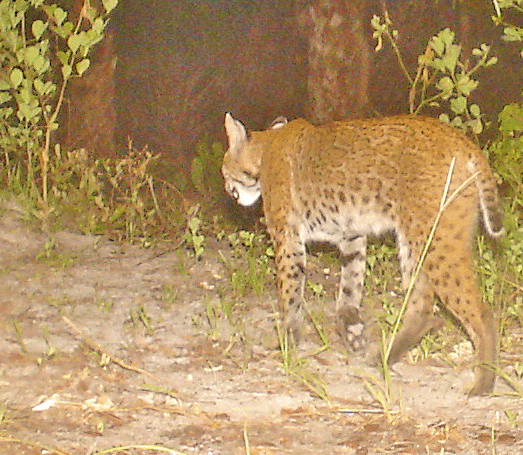 Felis rufus adults are 51 cm tall and 84 cm long. The tail is only 10 cm. It is this short (bobbed) tail that gives it its common name, "bobcat." Bobcats have an orange-brown summer coat and a paler gray winter coat. These colors act as camouflage. In addition to the overall coat colors, they have black spots and bars on their legs and rear. A bobcat's face is flat and wide with black lines radiating into the facial ruff. Its ears are short and tufted.
Felis rufus adults are 51 cm tall and 84 cm long. The tail is only 10 cm. It is this short (bobbed) tail that gives it its common name, "bobcat." Bobcats have an orange-brown summer coat and a paler gray winter coat. These colors act as camouflage. In addition to the overall coat colors, they have black spots and bars on their legs and rear. A bobcat's face is flat and wide with black lines radiating into the facial ruff. Its ears are short and tufted. 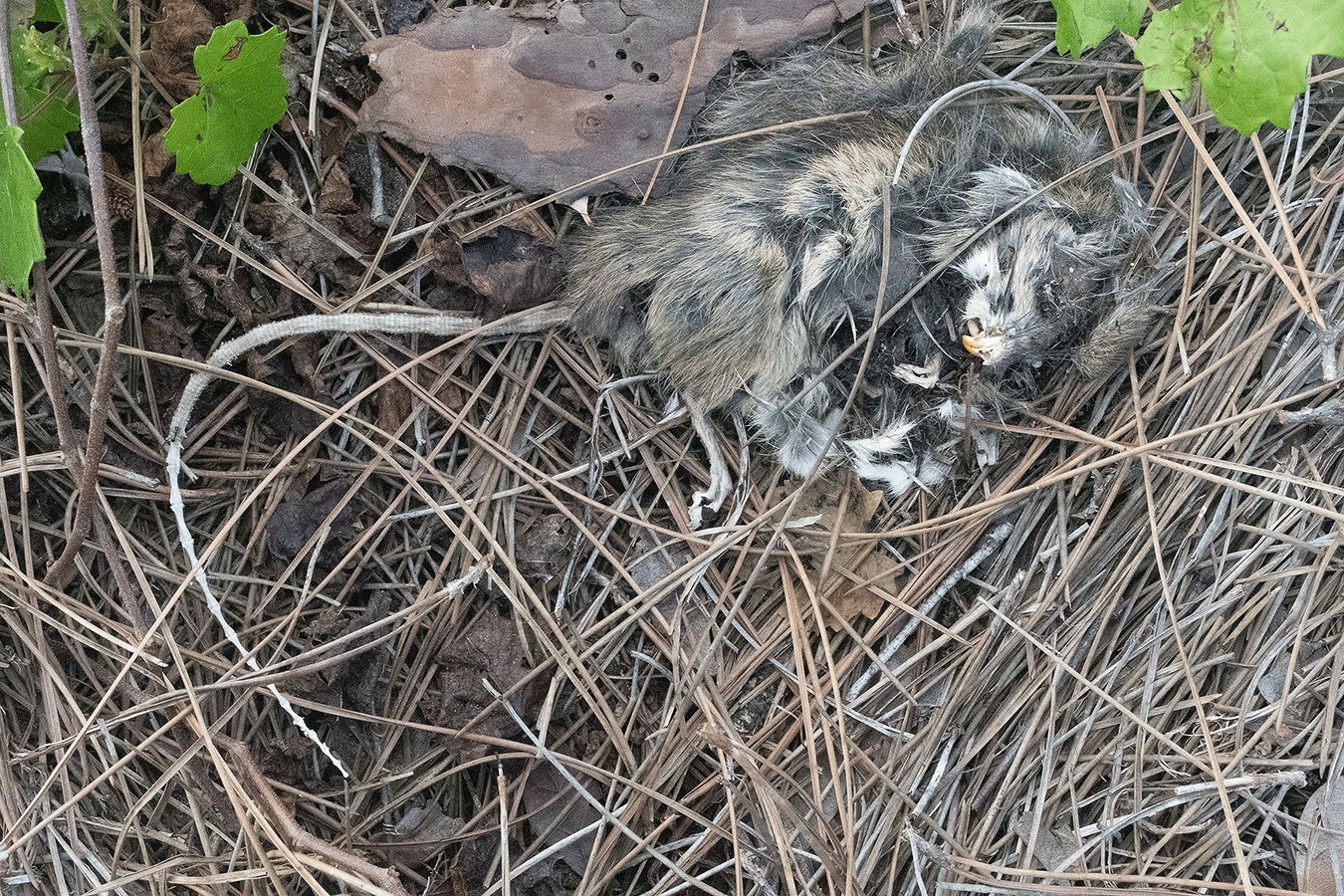
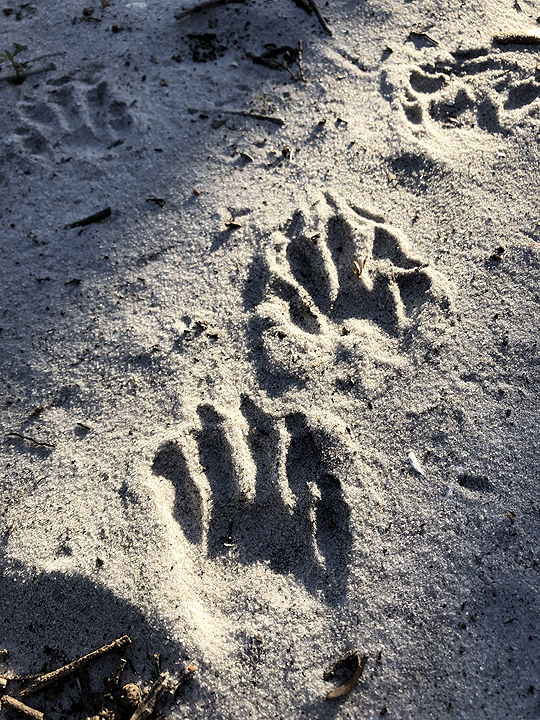
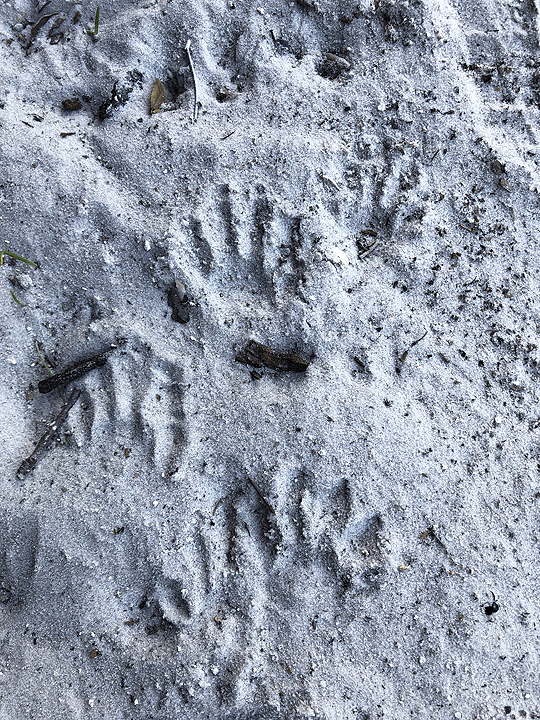
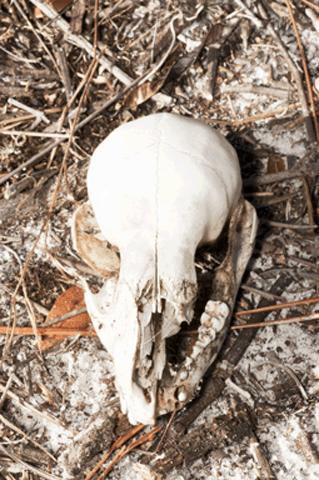
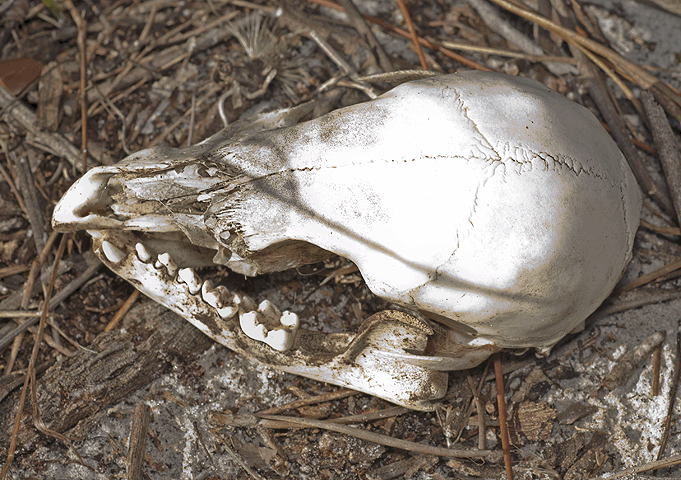
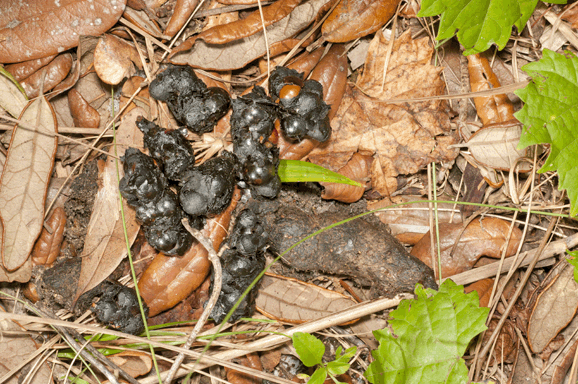 As shown at left, scat found in the Preserve often contains seeds from fruiting trees. It should be noted that raccoon scat is potentially harmful to humans because it may contain microscopic roundworm eggs of Baylisascaris procyonis. If these roundworm eggs are accidently ingested, larvae may hatch from the eggs and migrate to a person's brain, liver, and/or eye.
As shown at left, scat found in the Preserve often contains seeds from fruiting trees. It should be noted that raccoon scat is potentially harmful to humans because it may contain microscopic roundworm eggs of Baylisascaris procyonis. If these roundworm eggs are accidently ingested, larvae may hatch from the eggs and migrate to a person's brain, liver, and/or eye. 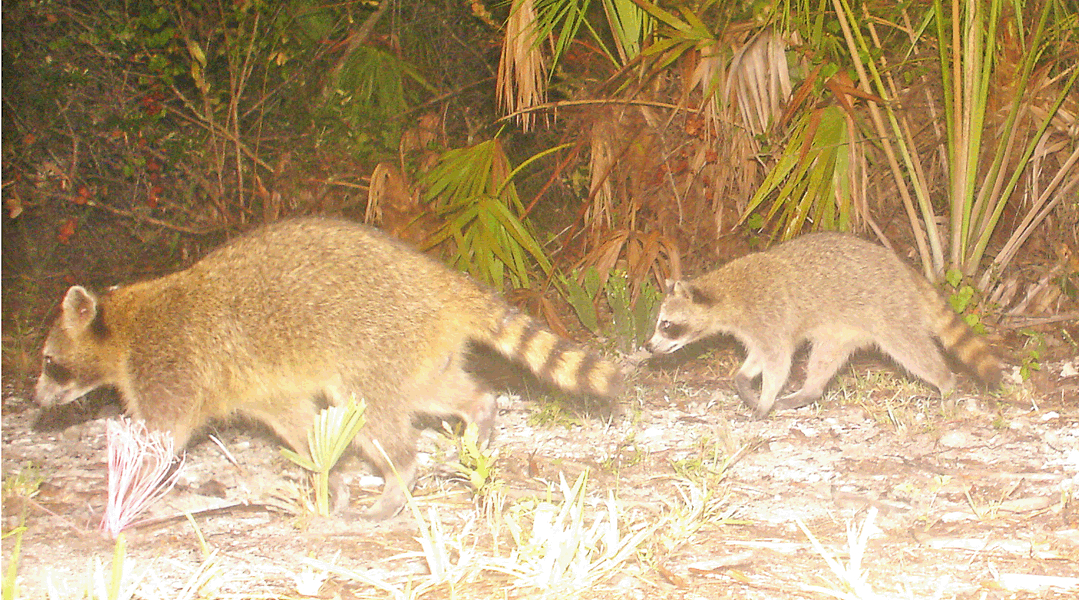
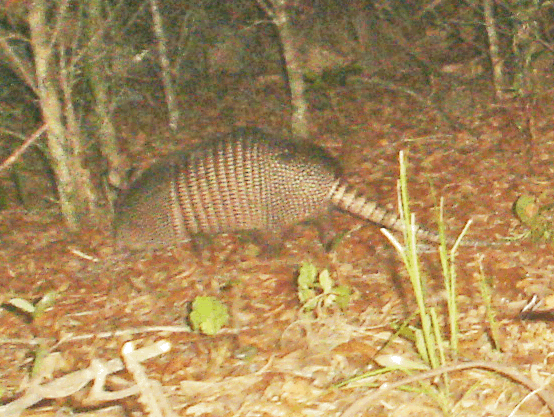 There are 20 armadillo species in Central and South America and Florida's fossil record indicates several armadillo species living here before becoming extinct 10,000 years ago. However, today, there is only one species in the United States. This is the nine-banded armadillo, a migrant to Florida from Texas about 1850.
There are 20 armadillo species in Central and South America and Florida's fossil record indicates several armadillo species living here before becoming extinct 10,000 years ago. However, today, there is only one species in the United States. This is the nine-banded armadillo, a migrant to Florida from Texas about 1850. 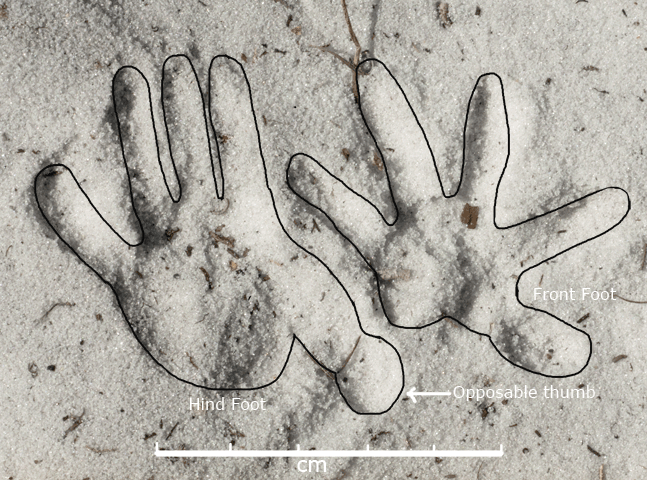
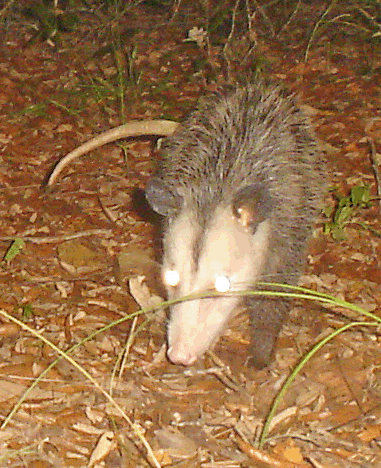
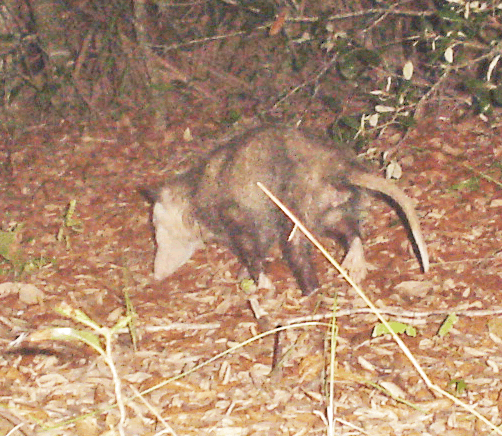
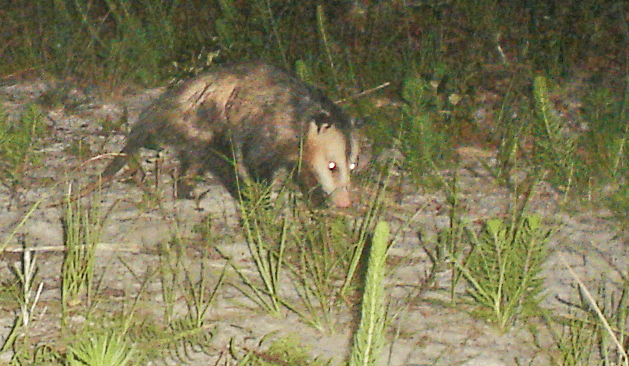
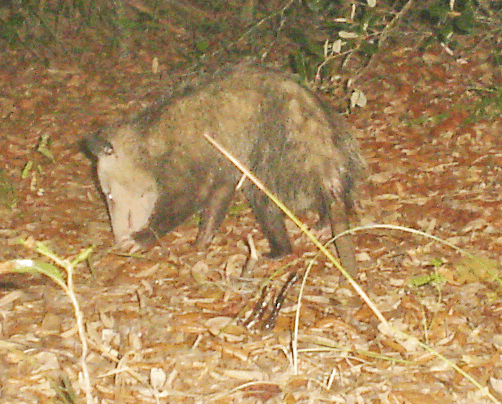
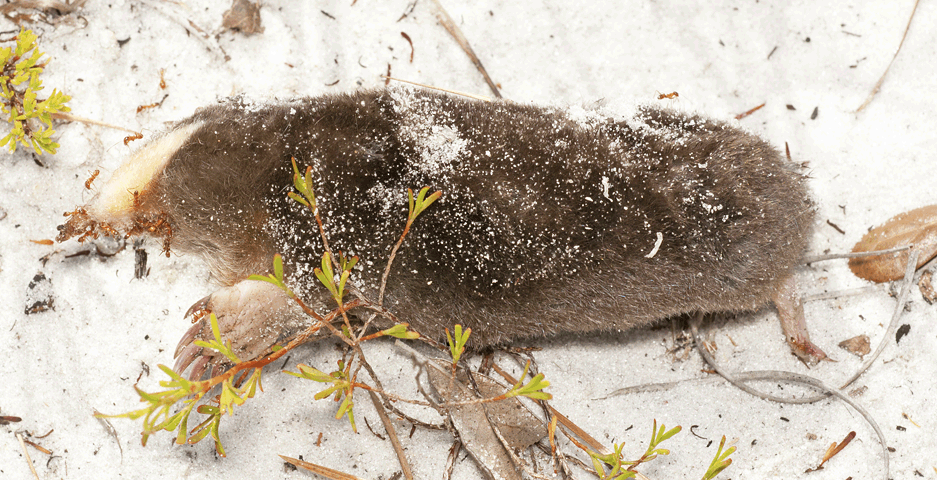
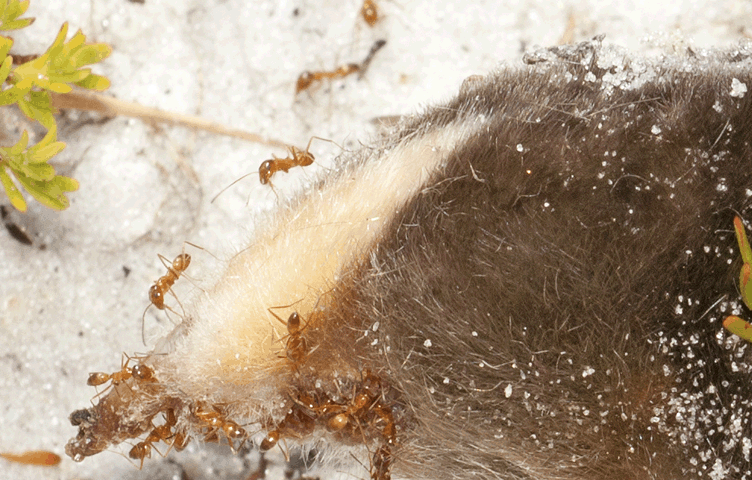
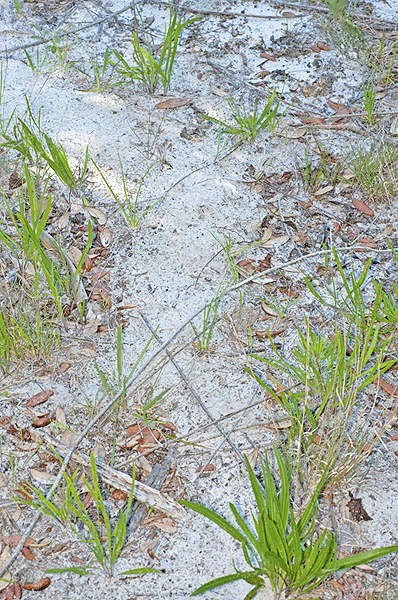
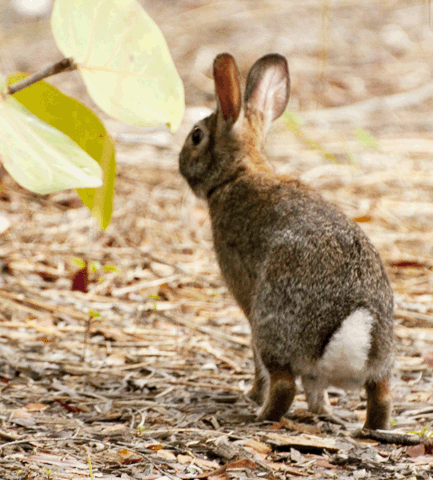


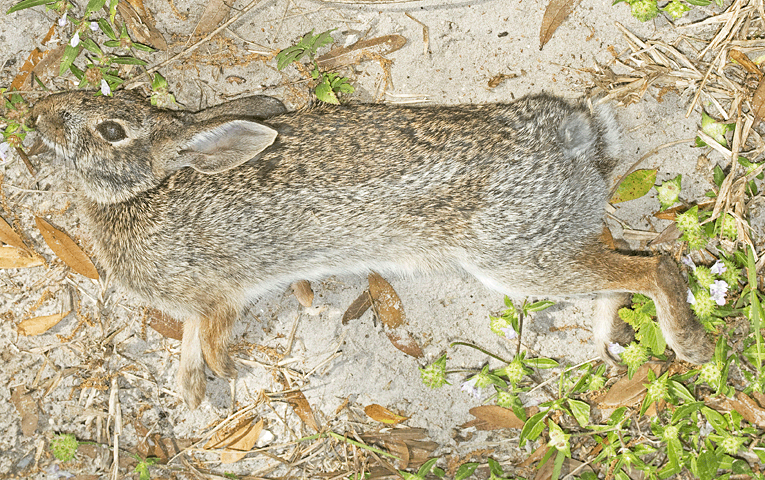
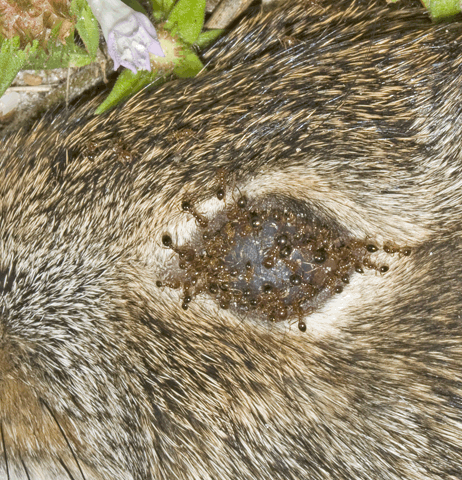
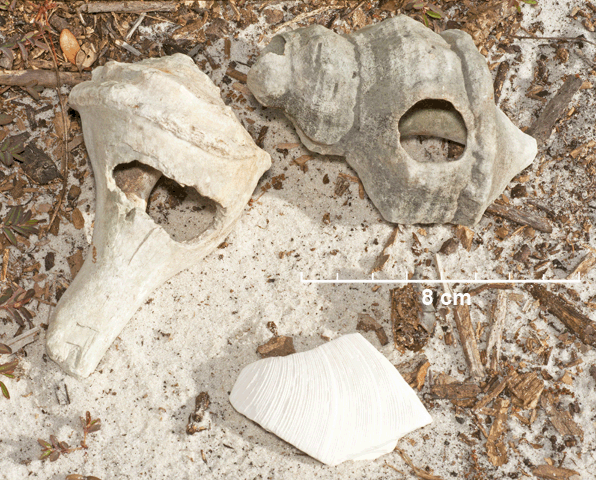 Humans have used the area now designated as the Smith Preserve for many years for a variety of reasons.
Humans have used the area now designated as the Smith Preserve for many years for a variety of reasons. 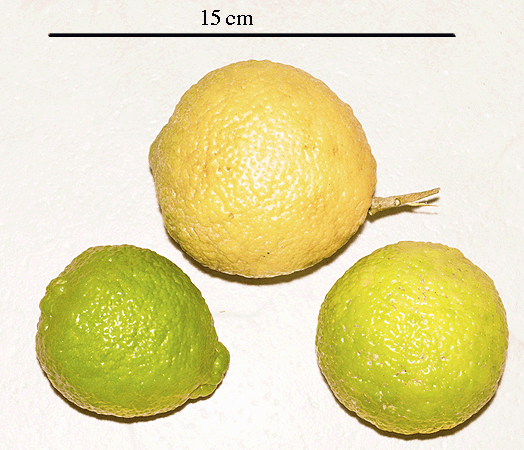
 In 2005, the property was purchased by the Christopher B. Smith family and others, and set aside as a Preserve by the Conservancy of Southwest Florida for endangered gopher tortoises.
In 2005, the property was purchased by the Christopher B. Smith family and others, and set aside as a Preserve by the Conservancy of Southwest Florida for endangered gopher tortoises. 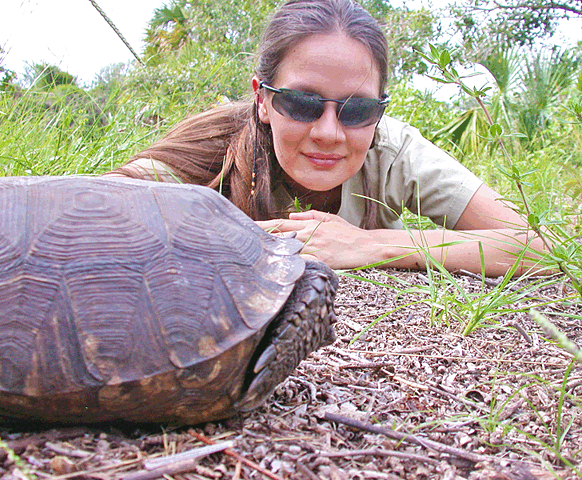

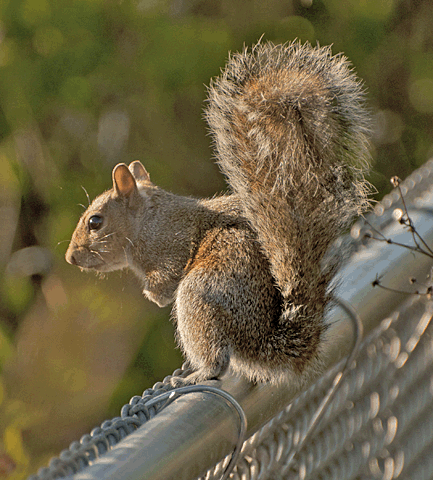 Sciurus carolinensis is 48 cm long with a long, bushy, grizzled black and white tail (23 cm). It has a round head and buff colored eye rings and snout edges. The coat changes color seasonally. In summer, the squirrel is gray with a tawny brown head, legs, and sides. It is white below. In the winter, it is gray above and white below.
Sciurus carolinensis is 48 cm long with a long, bushy, grizzled black and white tail (23 cm). It has a round head and buff colored eye rings and snout edges. The coat changes color seasonally. In summer, the squirrel is gray with a tawny brown head, legs, and sides. It is white below. In the winter, it is gray above and white below.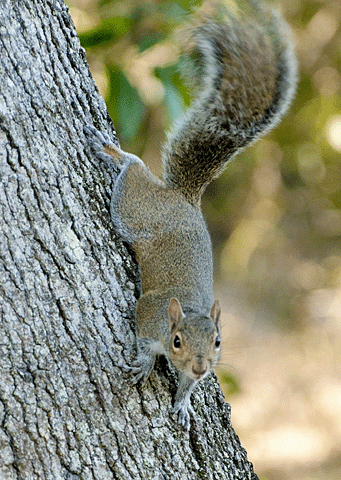
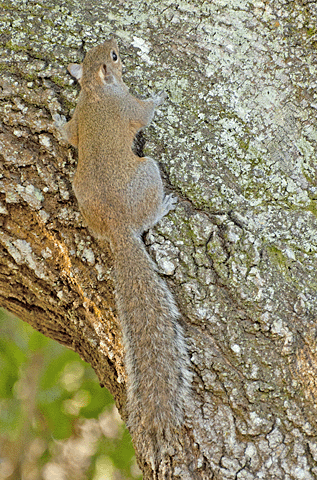 An Eastern Gray Squirrel's diet consists of nuts (primarily acorns), buds and flowers, fungus, catkins and seeds of pines, insects, bird eggs, nestlings, and frogs. They bury their food in caches and relocate the cashes using memory and smell.
An Eastern Gray Squirrel's diet consists of nuts (primarily acorns), buds and flowers, fungus, catkins and seeds of pines, insects, bird eggs, nestlings, and frogs. They bury their food in caches and relocate the cashes using memory and smell. 